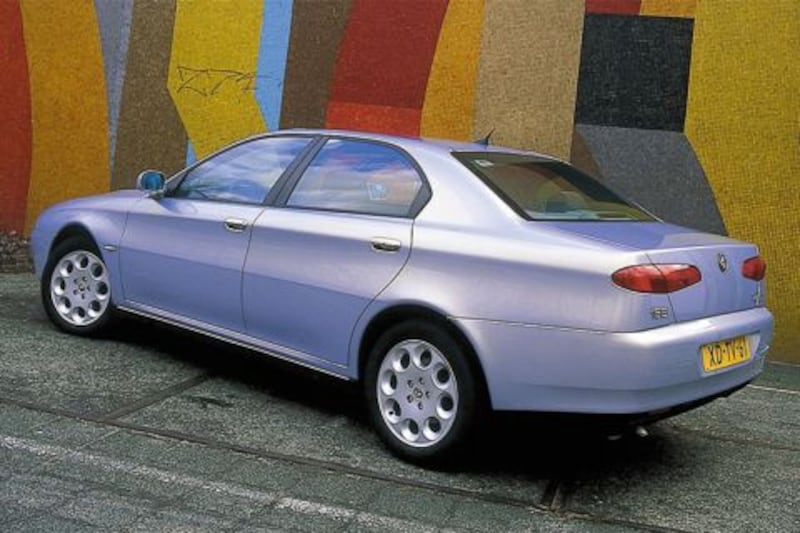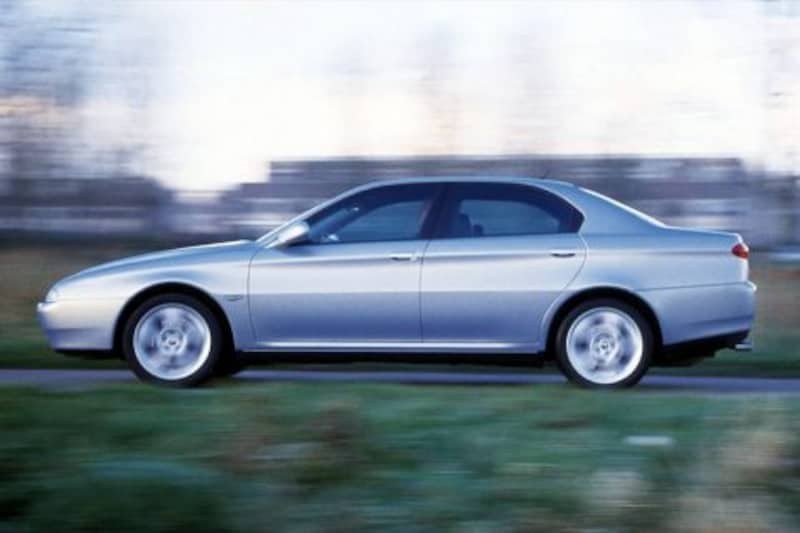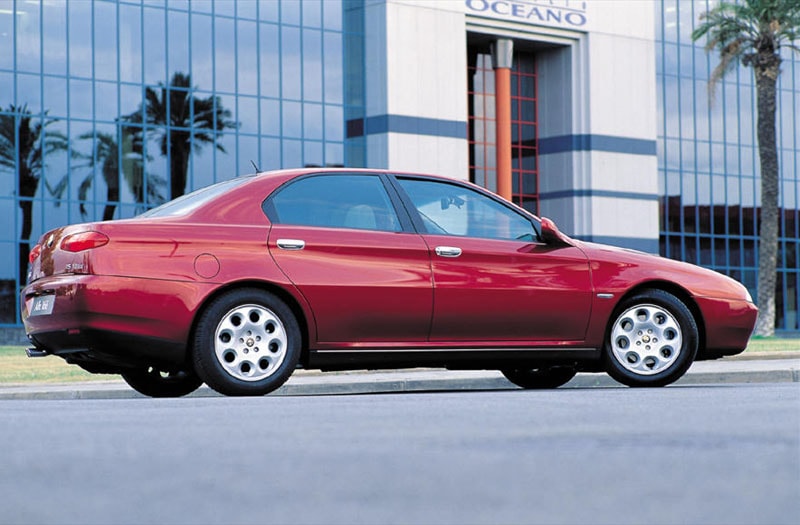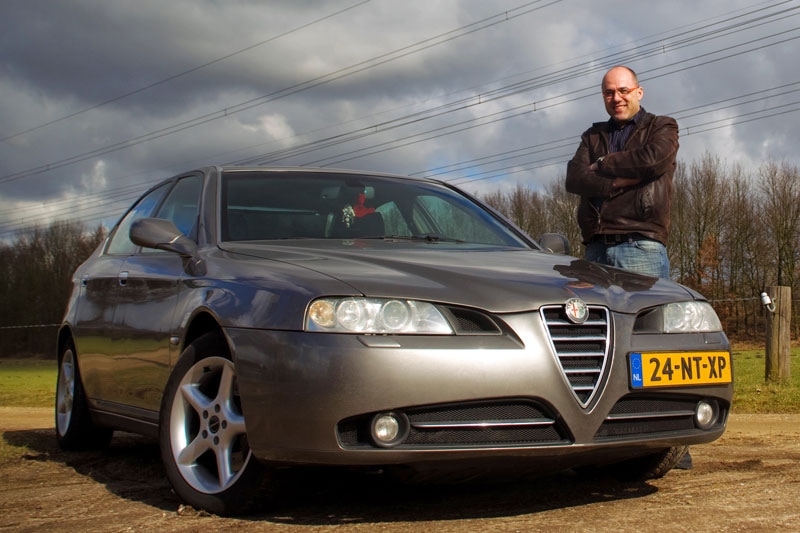This Alfa did almost everything right
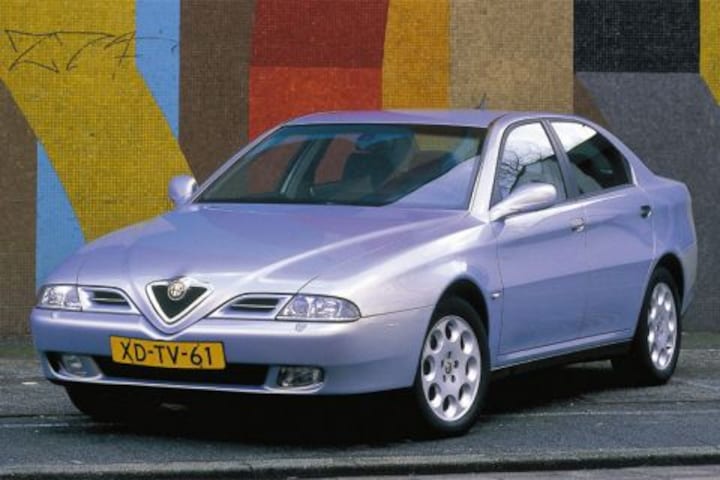

This year we regularly look back at the car year 1998. We recently kicked off with the Ford Focus, in this episode we look at the Alfa Romeo 166. The last new, large Alfa for the E-segment. What makes the car special? Well, anyway the fact that there has never been such a big Alfa Romeo again. The current Giulia and Stelvio may be just as large or even larger in size, operating in the D segment. So the Alfa 166, you can read all about it in this article.
What did the start-up process for the 166 look like?
With the 164, Alfa Romeo finally has an imaginative top model in the range again in 1987, after a messy period in which half-baked creations such as the 6 and 90 were the banners. But in the 1990s, the sleek Pininfarina design became more and more elaborated, which is why Alfa Romeo started work on a successor in 1990. The original plan is a complete restyling of the 164 (the TR, Total Restyling). Pininfarina makes a number of proposals, as well as Alfa’s own Centro Stile led by Walter de’Silva. Later, Bertone and Italdesign are also in the race for the winning design. But Fiat CEO Paolo Cantarella decides that there should be a completely new model, based on the Lancia Kappa platform. It sees the light of day in 1998, a year after Alfa Romeo has amazed the world with the beautiful 156. The 166 is based on a sketch by Wolfgang Egger, also responsible for the Nuvola concept car that serves as a signpost for Alfa’s new design direction. While similarities with the 156 are obvious, the 166 is fundamentally different. It is actually more outspoken than the 156, which is correct from A to Z as a total picture. The 166 is not an instant beauty. He has an elegant, elongated design, a firm buttocks and a pointed nose with beady eyes. The rising waistline is reminiscent of the 164. The concave surfaces on the side are a striking style element. The length, width and wheelbase of the car have increased significantly compared to the 164. “The attention to detail was almost maniacal,” says Mario Favilla of the design team. In 2017, Walter de’Silva nevertheless makes a number of comments. According to him, the final design of the 166 was not his first choice, but was the result of an older design proposal that was pushed through from above.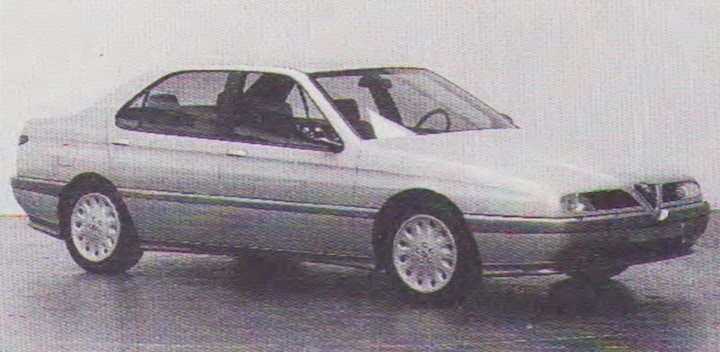
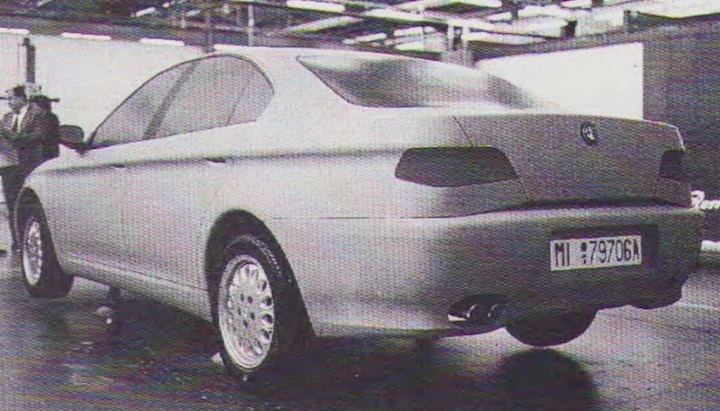
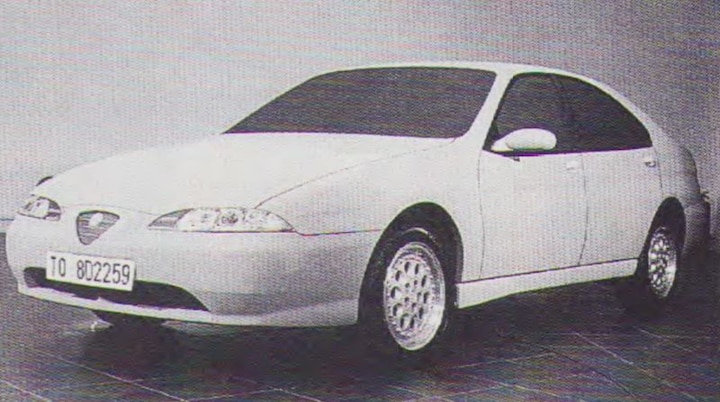
Above you see Alfa Romeo 166 design proposals.
How revolutionary was he really?
Compared to the 164, the 166 is a big improvement in terms of space and driving characteristics. The latter thanks to a front wheel suspension with double wishbones and a multi-link rear axle construction. Furthermore, the 166 does not set standards in terms of innovation. He is most praised for his distinctive design.
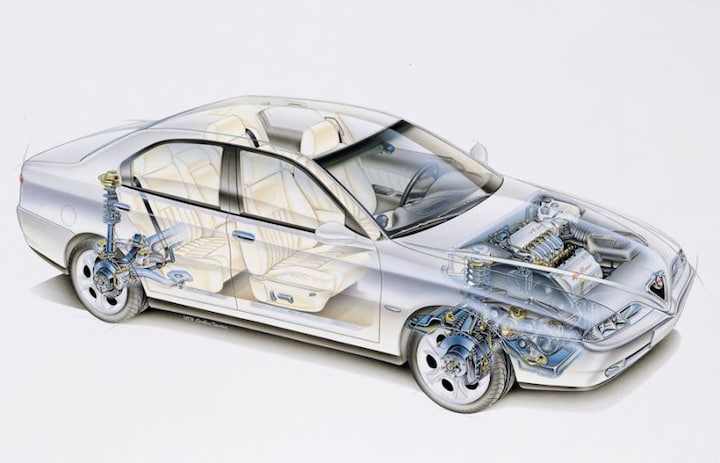
How was the 166 received?
Very excited. At the end of June, when the first photos will be released, we talk about a ‘dazzling beauty’. At the ‘dynamic’ introduction in Italy, there is criticism of the limited headroom in the back, but there is praise for the sound insulation, the comfortable tuning of the suspension, the course stability, the smooth Sportronic automatic transmission and the luxurious furnishings. Even the build quality is praised. The only recurring – subjective – flaw is of an aesthetic nature: the headlights are too small.
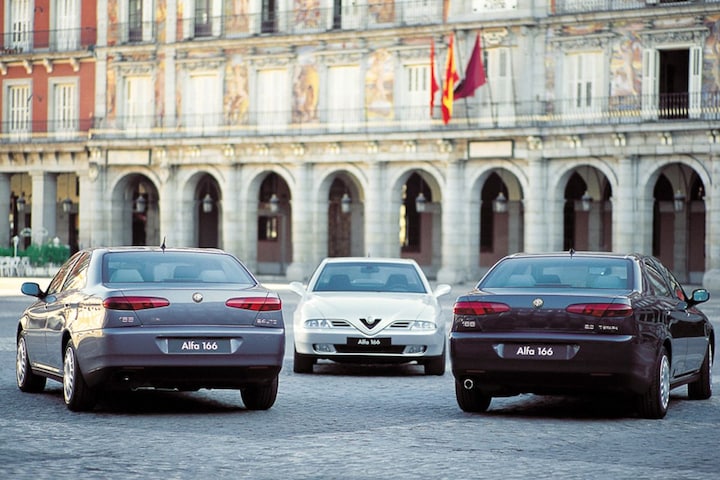
What were the choices during the market launch?
In October 1998, the 166 comes on the market in the Netherlands. The basic engine is a two-liter four-cylinder Twinspark of 155 hp, after which you can choose from two different V6s: a 2.5 with 190 hp or a 3.0 with 226 hp. Dieselen goes with a 2.4 JTD five-cylinder of 136 hp. There is also a 2.0 V6 Turbo with 205 hp, but it is only intended for the Italian market. Switching is done with a manual five- or six-speed gearbox or with a four-speed Sportronic automatic transmission. That is a robotized manual gearbox that can also be operated with paddles behind the steering wheel. The trim levels are called Progression, Distinctive, Super and Edizione Esclusiva. ABS, front and side airbags are standard on all models. More exotic gadgets, such as traction control, ASR anti-slip control and xenon headlights are reserved for the more expensive variants or are available at extra cost on the other versions. A built-in GSM telephone or satellite navigation, very high-tech at the time, is also possible.
What were its competitors?
In the E-segment, the competition in the late 1990s consisted of established names such as the BMW 5-series (E39), Mercedes E-class (W210) and Audi A6. More obvious is a comparison with slightly less prestigious models such as the Peugeot 605/607, Renault Safrane/Vel Satis, Jaguar S-type, Saab 9-5, Opel Omega, Volvo S80, Citroën XM/C6 and compatriot and platform companion. Lancia Kappa and its successor Thesis.
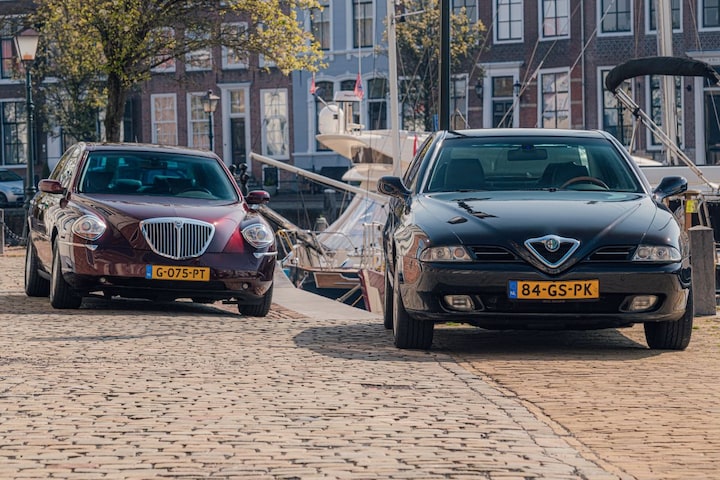
In the first comparison test in AutoWeek, at the end of 1998, we let the 166 2.5 V6 compete against the BMW 523i. The latter is praised for the tranquility on board, good finish, pleasant ergonomics and the space in the back. The Alfa Romeo scores points with its driving dynamics, its character, the pleasant operation of the color screen on the center console and the much lower price: fl. 84,900 (€38,526) compared to fl. 99,900 (€45,333) for the BMW.
If we look at the starting prices of the other six-cylinder engines of around 190 hp (the 166 3.0 V6 with 226 hp costs €44,425) in 1999, you step from €38,526 in an Audi A6 2.8 (€46,195), BMW 528i (€46,694 ), Mercedes E 280 (€49,099), Volvo S80 2.9 (€41,203), Peugeot 605 3.0 (€36,348), Saab 9-5 3.0 (€43,767), Opel Omega 2.5 (€32,649), Jaguar S-type 3.0 ( €46,739), Renault Safrane 3.0 (€36,073), Lancia Kappa 3.0 (€41,407) and Citroen XM (€39,937).
How was the Alfa Romeo 166 received by consumers?
Would the 166 have sold better if it had not shared the showroom with the beautiful and very successful 156? Maybe. The fact is that the 166 cannot match its sales figures, nor those of the 164. In 1999, the first full (and best) sales year, 985 166s were sold in the Netherlands. By way of comparison: in the first full year of sales of the 164 (1989) and 156 (1998) there are 1,500 and 5,379 units respectively. In the whole of Europe, 26,537 166s leave the showroom in the first year of sales, of the 156 there are 95,000. One of the reasons for the poor sales is the relatively high depreciation of large cars that do not come from Germany. In 2009, the British Autocar crowned the 166 with the questionable title of ‘Fastest depreciating car’; a new 166 turns out to be worth only 14.4 percent of its new price after three years. It is not the quality of the 166, the car is well put together and appears to be quite reliable.
Any details during the life of the 166?
That’s not too bad. In 2002, Alfa Romeo presented the facelift version, designed by Daniele Gaglione and Wolfgang Egger. The characteristic small headlights made way for considerably more robust ones in a redesigned facade, including a large ‘Scudetto’ grille. The new front is less idiosyncratic than before. The purity and organic shapes of the original design seem a bit lost. However, he is now in line with the facelifted 156, a project by Giugiaro. Alfa is using the facelift to also refresh the engine range: the Italian 2.0 turbo V6 disappears, the 3.0 V6 becomes a 3.2 and thanks to the Multi-Jet technology, the JTD now delivers 175 hp. Unlike the 156 and 147, there will never be a GTA version of the 166. There were rumors about a four-wheel drive ‘M5-killer’ with V6 turbo or V8, but it never became concrete.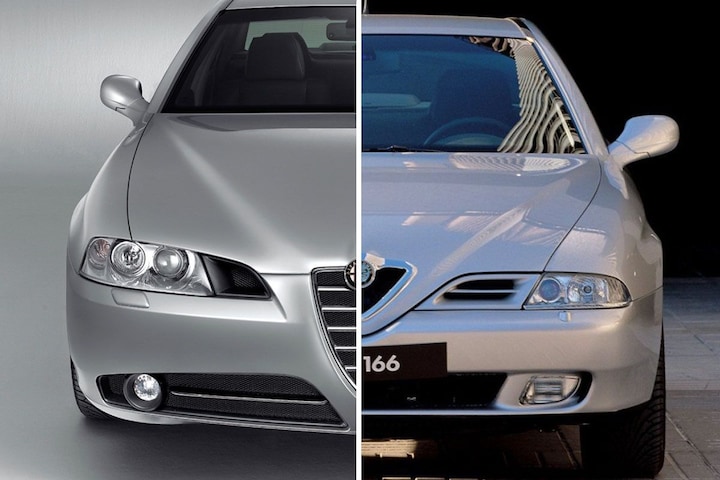 The most remarkable move makes the 166 after its European life. The Chinese car manufacturer GAC buys the production line for the platform and parks its own design on it in 2010, the completely interchangeable Trumpchi GA5. With Alfa’s 2.0 Twinspark engine. In a sense, the 166 will remain in production until 2018, a twenty-year career.
The most remarkable move makes the 166 after its European life. The Chinese car manufacturer GAC buys the production line for the platform and parks its own design on it in 2010, the completely interchangeable Trumpchi GA5. With Alfa’s 2.0 Twinspark engine. In a sense, the 166 will remain in production until 2018, a twenty-year career.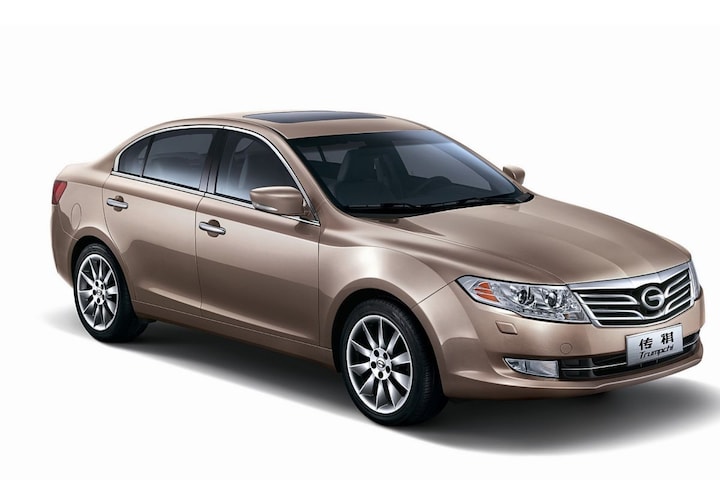
The GAC Trumpchi GA5, unrecognizable as 166.
Which version appeals the most to the imagination?
If you want a pre-facelift model – and you do – then the Ti package is unfortunately not available, which only came when the 166 got its new nose. Then go for the thickest engine and a decorated interior. A pearlescent Azzuro Nuvola blue 3.0 V6 with manual transmission in Red Style version is the holy grail in that respect.
A pearlescent Azzuro Nuvola-blue 3.0 V6 with manual gearbox, please.
What has been the impact of the 166?
Modest. Such a glorious career as its predecessor 164 had, was not reserved for the 166, the model was perhaps too idiosyncratic for that. The fact that the 166 was not given a successor says enough in that regard. You have to praise Alfa Romeo for their guts to bring a car to the market in this fairly conservative class that is really different. Unfortunately, that is no guarantee of success. Would the 166 have been more successful if it had bigger headlights from the start? In the end, the small headlights were often the only point of criticism. We’ll never know, which is why the 166 will go down in the history books as a stylish car that had the misfortune of having to succeed a successful model and also had to tolerate a much more popular little brother alongside it.
How many were built and how many are left?
Between 1998 and 2007, 96,575 166s were built, of which 90,224 were sold in Europe. A handful went to Australia. Considerably less than Alfa Romeo sold 164 of its predecessor (273,000). In the Netherlands, 3,050 new 166s found a buyer. According to Vinacles data, there are currently 648 units with active license plates left. These are distributed over the years of construction as follows.
1998 12
1999 108 2000 76
2001 62
2002 62
2003 58
2004 158
2005 66
2006 41
2007 5
source: vinacles
.
– Thanks for information from Autoweek.nl
